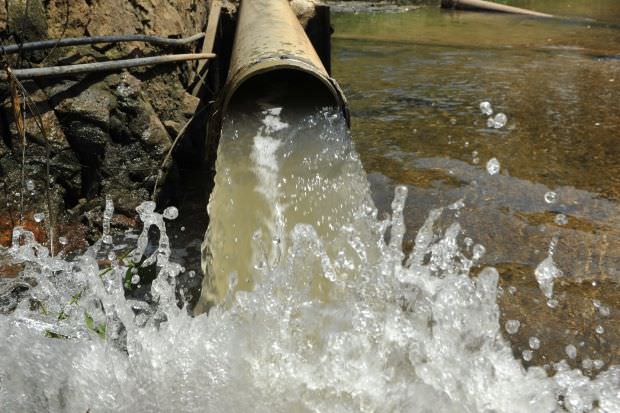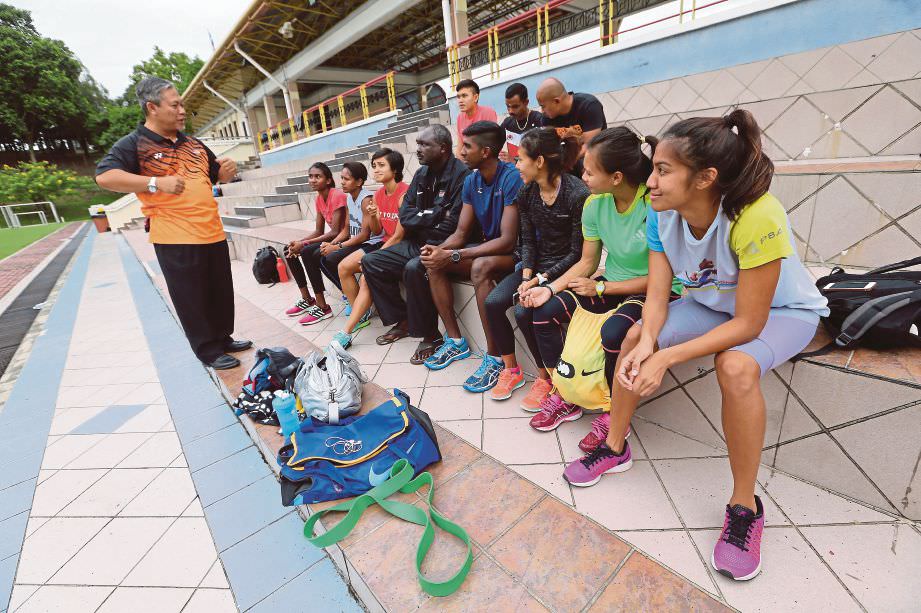Reclaimed water: Treated sewage effluent that is further processed with membrane filtration and ultraviolet disinfection, can be made clean enough for non-potable reuse. It can become another water source. – GARY CHEN/The Star:-
As the weather turns erratic, we can no longer just wait for the rains to fill our rivers. It’s time to look for water elsewhere — like in a sewage treatment plant.
IN some countries, a sewage treatment plant is not called that. Instead, it is called a water reclamation plant – because it does exactly that. The sewage undergoes thorough treatment so that water is reclaimed for reuse.
The reclaimed water or recycled water becomes an alternative water source to meet demands by industries, businesses and even households.
With predictions of water shortages in the future, reclaimed water is being touted as something Malaysia should consider, alongside other options such as groundwater and stormwater. Diversifying our water sources helps ensure water security. As the recent water crisis showed, it will be foolhardy to just rely on rivers for our water needs.
Recycling of treated effluent from sewage treatment plants is totally feasible and nothing new. Singapore has been doing it since 2003 and Australian cities have long relied on it. By recycling wastewater for non-potable uses, we save tap water for purposes where high-quality water is needed.
Indah Water Konsortium (IWK) chief executive officer Datuk Abdul Kadir Mohd Din describes sewage effluent as “an untapped resource”. He says the treated wastewater produced by IWK’s 6,000 plants amounts to 4,000 million litres a day, which is a quarter of the water used for drinking.
“It is water that can readily be used. Recycling is a sustainable approach and treated effluent from sewage treatment plants is a source of alternative water that should be tapped. We should recycle it for non-potable use, based on the ‘fit-for-purpose’ principle.”
Wasteful uses
He points out that over 40% of a household’s water use is for flushing toilets and watering the garden. These are activities that do not require water to be of drinking quality and yet, that is exactly what we use. Examples of wasteful industrial uses of potable water are in cooling towers in power plants, for tunnel coring and in cement mixing.
“Drinking water is precious and should be reserved for human consumption and not wasted on non-potable uses such as to wash cars, clean yards and drains, and water the garden. We should use recycled waste instead.”
Abdul Kadir says the effluent from IWK’s 6,000 plants comply with Standard A [as set for discharges upstream of a water supply intake under the Environmental Quality (Sewage and Industrial Effluents) Regulations 1979]. The exception is some 600 oxidation ponds where the discharge is at Standard B. Standard A effluent is suitable for cleaning purposes and landscaping.
Assuring that the treated effluent is no longer polluting, Abdul Kadir quips, “We treat the water till clean, then release it into a dirty river.”
Various technologies are available to treat wastewater to the quality required for various uses. For landscaping purposes, the effluent need only be polished (filtered) and disinfected. For industrial cooling purposes or in certain industries which require cleaner water, such as the textile industry, more comprehensive processes involving membrane filtration and ultraviolet disinfection will be needed.
In one IWK trial project in Cyberjaya, the effluent was rendered drinkable through the use of membrane and reverse osmosis technology.
The recycling of treated effluent is demonstrated at the Bunus regional sewage treatment plant in Kuala Lumpur, where it is used for general cleaning, landscaping and in the mixing of chemicals for the treatment process. Reclaimed water has been successfully used for landscaping in Port Dickson by the municipal council. Other local authorities in Kuala Lumpur, Alor Setar, Kangar and Ipoh are now trying it.
Guiding rules
To understand why IWK has not gone into recycling sewage effluent in a big way, one has to understand its functions: the government-owned company is only tasked with operating and maintaining sewage treatment plants (which are built by the Government).
“Our obligation and core business is to treat the effluent according to standards and ensure it complies with conditions (set by the Department of Environment) and the (resulting) sludge is safe. The downstream operation of turning waste into resource is not our core business but we can do it on the sideline, so long as it does not affect our core business,” explains Abdul Kadir.
To push things along, he says the Government has to define a policy to guide and promote recycling of by-products from sewage treatment. (Aside from the reclaimed water, the sludge can be used as fertiliser while methane emitted during effluent treatment can be tapped to produce energy.) There must also be investment in infrastructure to process the wastewater and distribute the reclaimed water.
A key challenge is overcoming the negative perception towards reclaimed water and making people view wastewater as a resource.
“We need to re-brand the wastewater industry and as a start, we prefer to refer to treated wastewater as bio-effluent,” says Abdul Kadir.
He shares that at the height of the water crisis in April, there was some interest from industries on using reclaimed water but it was short-lived. “There were enquiries but it all stopped when the rains came. They are not at a desperate stage yet.”
He believes that once the three key components are in place – market demand, the necessary policies and needful investment – there will be wider wastewater recycling from IWK plants.
For now, IWK is restricting the usage of reclaimed water to non-potable uses and for non-food crops. “The principle is to save drinking water and to use the bio-effluent as fit-for-purpose,” says Abdul Kadir.
Of course, the wastewater recycling has to be done properly to safeguard public health and the environment. For this, he says the government policy should specify quality standards for the recycled water according to uses. It should also establish targets for recycled water quantity, particularly in urban water-stressed areas, as well as determine guidelines on where and how much to recycle.
“You cannot recycle all the wastewater. The river will need some water too (to sustain the riverine ecology).”
Another aspect requiring attention is conformance to religious requirements. For that, he says religious authorities in Negri Sembilan and Kelantan have issued a fatwa allowing the use of reclaimed water.
Piping the water
To use the treated wastewater, a whole new water distribution network will be needed. Depending on demand, the water can either be stored or tapped directly. Abdul Kadir assures that the end user need not be located near the treatment plant, but if it is, the better as there will be less infrastructure involved for storage and distribution. The cheapest method will be for the end user’s tanker to collect the reclaimed water from the plant.
Another possibility is to build a storage reservoir within an industrial site along with dedicated pipelines for delivery. For new development areas, dual piping system can be considered – one for potable water, the other for second-grade water suitable for washing or flushing. But a question arises: who will pay for these infrastructure?
Abdul Kadir assures that using second-grade water will benefit both industries and house-owners.
“They will pay less for the water, and more water will be reserved for drinking. Any additional cost for the recycled water will only be passed on to the buyer and the cost will depend on the water quality required from the end user.”
He says the Government should set the tariffs for reclaimed water and we should start developing the infrastructure for recycling sewage effluent.
“The effort now is to wait for rain to fill up reservoirs. IWK is a more reliable source of water than rain … everyone uses the toilet. By recycling bio-effluent for non-potable use, we will reduce the stress on natural water resources which should be reserved for generating drinking water.
“This will contribute towards sustainable water resources in the water-constraint urban areas of Malaysia.”
– THE STAR







